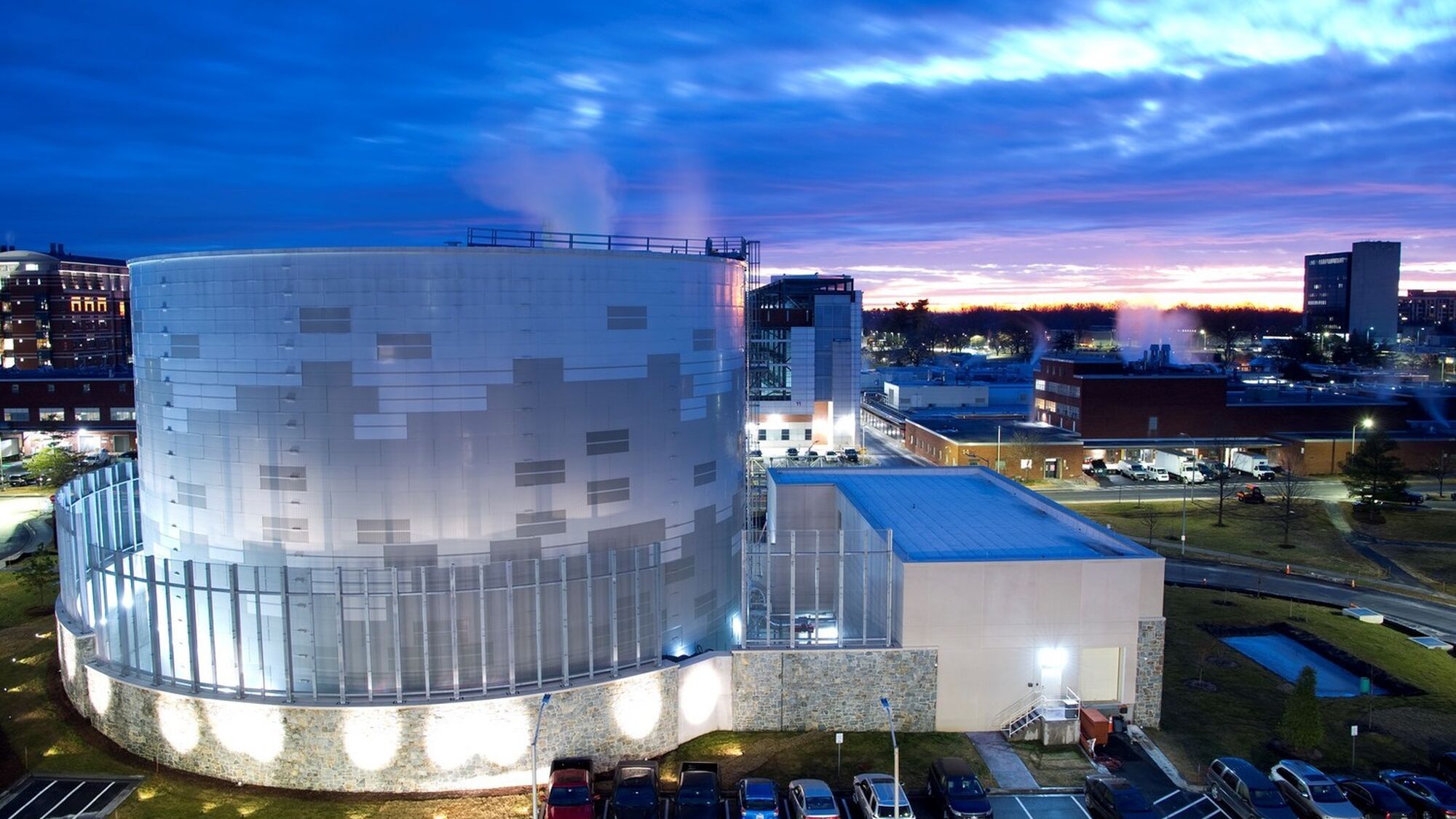
National Institutes of Health
Chilled Water Thermal Energy Storage System
Reliability and economy.
Among the critical utilities required to maintain stringent environmental conditions for the National Institutes of Health’s research facilities, chilled water equally represents an opportunity to realize significant energy savings. In addition to being a source of cooling during major power outages or chiller failures, the thermal energy storage system (TESS) that AEI recently completed allows approximately 50,000 ton-hours of load shift.

The new thermal energy storage system is located remotely from the central chilled water plant. Detailed hydraulic analysis determined optimal connection to the campus distribution system, facilitated by a pump station.
The NIH TESS consists of a partially buried eight million-gallon thermal storage tank and a pump station with three 600-horsepower variable speed pumps capable of charging or discharging the entire tank in five hours. A stand-by power generator can operate the entire system. TESS optimizes chiller operation, giving the plant the ability to more easily and economically meet peak chilled water loads through load leveling. AEI developed a forecast model with NIH to determine the optimal time to charge and discharge the thermal storage system for maximum energy savings based on hourly electrical pricing, chiller system performance relative to outdoor air conditions, forecasted hour loads based on historical data, and other system factors.
The project includes an industrial-grade replacement control system for the chiller plant, providing real-time interval data and appropriate levels of automation, monitoring, and optimization. A new supervisory control and monitoring system automatically controls all twelve chillers, cooling towers, pumps, and ancillary requirements, automatically starting and stopping chillers and loading and unloading the chillers to maximize system efficiency. The system is expandable to six additional chillers and is capable of interfacing with building automation systems for data collection. Operational parameters are trended in five-minute intervals, with adequate server storage for three years of data.
The National Institutes of Health is made up of 75 buildings on 300 acres. Over 12 million square feet are dedicated to biomedical research facilities and a world class 240-bed hospital.